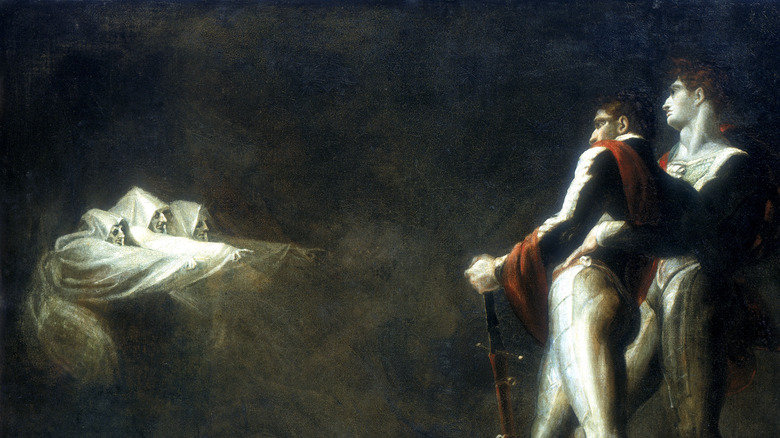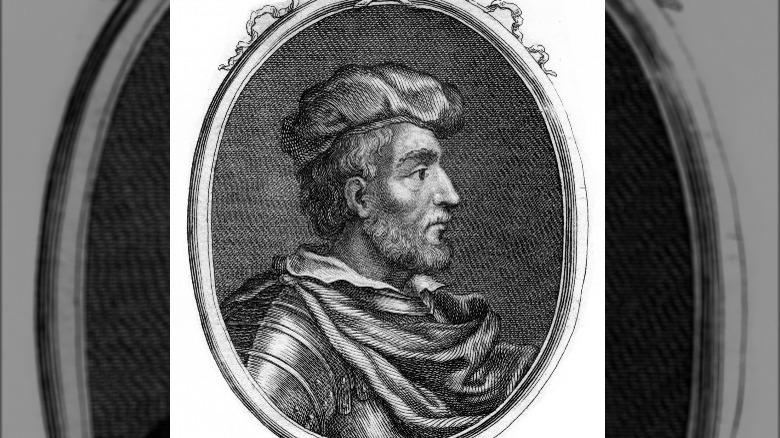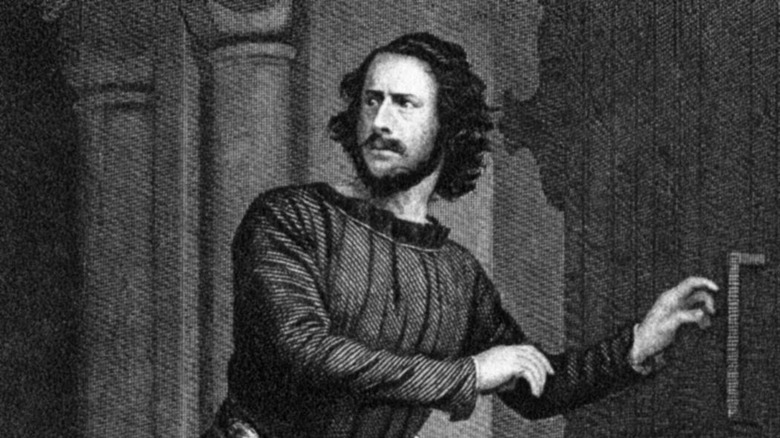The Truth About The Real-Life Kings Who Inspired Macbeth
William Shakespeare penned one of his greatest tragedies, "Macbeth," around 1606 with the hopes of impressing his patron, King James I (via Columbia College). He added flourishes that he knew would appeal to the reigning monarch, including a trio of prophecy-spouting witches which tapped into the king's interest in spooky and supernatural things (via Utah Shakespeare Festival). Shakespeare even added one of the king's ancestors, the Scottish nobleman Banquo, as a character in "Macbeth." At the heart of the play, however, is a real-life royal rivalry that spanned generations and led to a great deal of bloodshed.
Clearly, Shakespeare knew a good family drama when he heard about one. The royals seeking to rule Scotland in the 1000s, also called Alba, engaged in some vicious battles for power. Shakespeare drew from these struggles for "Macbeth," particularly the stories of King Duncan I and King Macbeth. As David Brown, a Scottish history lecturer at Glasgow University, explained to Travel Scotland, "You have to remember that these were bloodthirsty times, and that politics often involved murdering your opponent. When they talked about stabbing someone in the back in those days, they really meant it."
King Duncan I was not a great leader in real life
In Shakespeare's famous tragedy, Macbeth plots with his wife, Lady Macbeth, against Duncan to take over the throne from him. But who was the real-life King Duncan? King Duncan I, also known as Donnchad mac Crínáin, was the grandson of Malcolm II (per Undiscovered Scotland). His grandfather appointed Duncan the ruler of an area called Strathclyde when it became part of his kingdom (via Britannica). When Malcolm died in 1034, Duncan became his successor. He was thought to be around 30 years old when he became king, nothing like the old monarch depicted in the play "Macbeth."
According to Undiscovered Scotland, Duncan married Suthen, a relative of an earl in Northumbria, in 1030. Together they had two sons, Malcolm III Canmore and Donald Bane. Duncan didn't have much of a reputation as a ruler with some reports claiming that he was weak and not very popular. His lack of standing with his own people may have contributed to his downfall. His cousin, Macbeth, emerged as a rival for the throne.
Real-life Macbeth wasn't such a bad guy
Unlike Shakespeare's villainous portrayal of him, the real-life Macbeth may have been a better leader than King Duncan I (via Historic UK). Macbeth was thought to be the grandson of King Kenneth II and his father Findlaech was the mormaer of the Moray region of Scotland, which was a chief-type role (via Britannica). Macbeth assumed his father's position in Moray sometime after his father's death. He also enhanced his claim to the throne by marrying Gruoch (sometimes written as Gruach), who was the granddaughter of King Kenneth III (via BBC). Macbeth made a deal with his cousin, the Earl of Orkney, to join forces to take power from King Duncan. King Duncan was slain in a battle near Elgin, and Macbeth soon became king. This is a very different death scene than in Shakespeare's version of events, having Macbeth kill Duncan in his bed.
Macbeth began his reign as Scotland's king in 1040, and he lasted much longer than the year of rule depicted in "Macbeth." He was known for his support for Christianity, and he even went on a year-long pilgrimage to Rome in 1050. Historians view his trip abroad as a sign of stability in the kingdom. In fact, he remained unchallenged in his position until 1054. The Earl of Northumbria rose up against Macbeth, seeking to place Duncan's oldest son, Malcolm Canmore, on the throne. Three years later, Macbeth faced Malcolm at the Battle of Lumphanan where he was killed.


